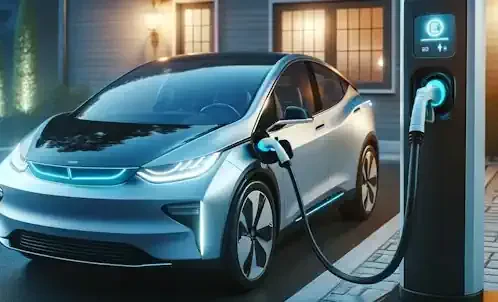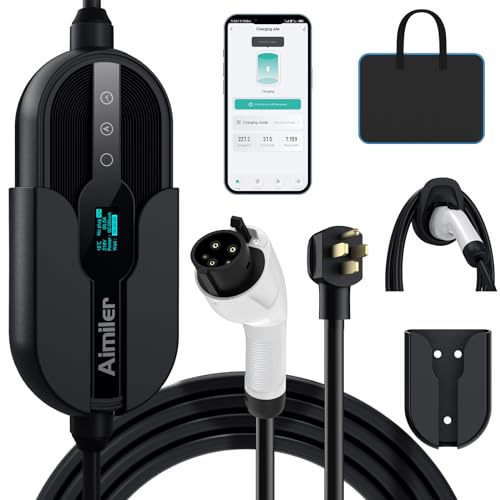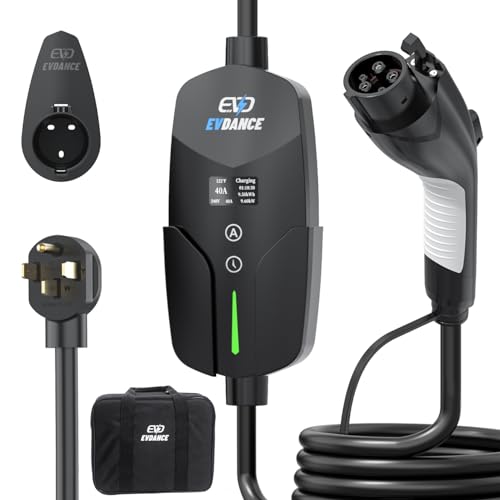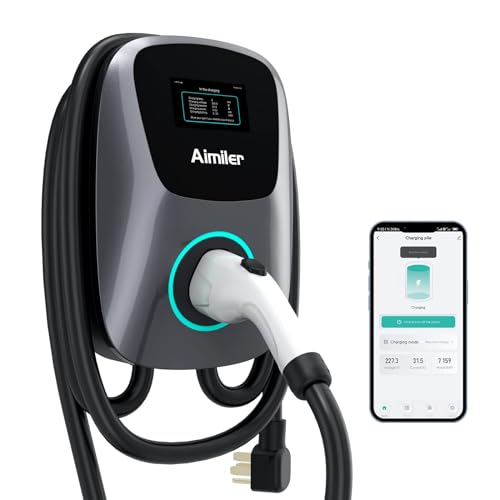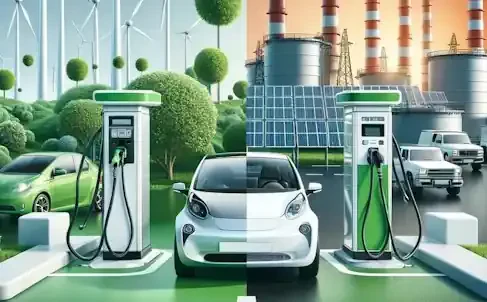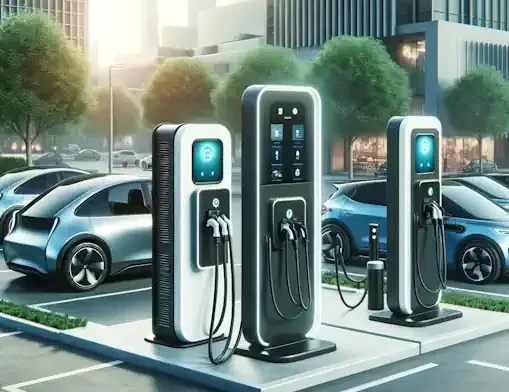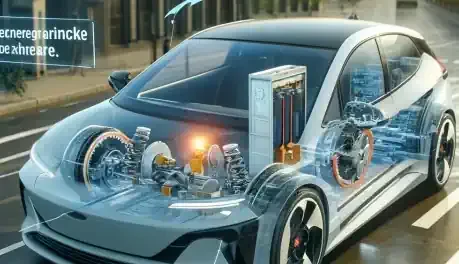Types Of Electric Vehicle Chargers: Unraveling The Options
The world of electric vehicle (EV) charging can seem complex, but understanding the different types of chargers is crucial for maximizing your EV ownership experience. Each type offers distinct advantages and limitations, catering to various needs and situations. Let's explore the main categories:
Level 1 chargers are the most basic and widely available EV chargers. They typically come standard with the purchase of an electric vehicle and plug into a regular 120-volt household outlet. While convenient, Level 1 chargers are the slowest option, adding only 2 to 5 miles of range per hour. This makes them suitable for overnight charging at home, especially for those with shorter commutes or access to other charging options.
Level 2 chargers are the most popular choice for home charging. They require a 240-volt outlet, similar to what powers an electric dryer, and offer significantly faster charging speeds than Level 1. With a Level 2 charger, you can expect to add 10 to 60 miles of range per hour, depending on your vehicle and charger specifications. This makes them ideal for overnight charging and provides peace of mind for longer commutes.
DC fast chargers are the fastest way to charge an EV, making them ideal for public charging stations along highways and busy urban areas. They use direct current (DC) power to deliver a high-voltage charge directly to the vehicle's battery, bypassing the onboard charger. This allows for charging rates of up to 350 kilowatts, adding hundreds of miles of range in under an hour. However, DC fast charging sessions are typically more expensive than Level 2 charging.
Tesla Superchargers are a network of high-powered chargers designed exclusively for Tesla vehicles. They offer some of the fastest charging speeds available, with certain models capable of adding up to 200 miles of range in just 15 minutes. Tesla owners benefit from seamless integration with the car's navigation system, which guides them to the nearest Supercharger and automatically initiates payment.
Wireless charging is still in its early stages of development but holds immense promise for the future of EV charging. It eliminates the need for physical cables and plugs, allowing EVs to charge simply by parking over a charging pad. While currently limited to slower charging speeds and specific vehicle models, advancements in wireless technology could revolutionize EV charging convenience in the coming years.
By understanding the different types of EV chargers available, you can make informed decisions about which options best suit your lifestyle, charging habits, and budget. Whether you prioritize speed, convenience, or cost-effectiveness, there's a charger out there to meet your needs.
Choosing The Right Charger For Your Needs: A Personalized Approach
Selecting the perfect electric vehicle charger is not a one-size-fits-all endeavor. It involves a thoughtful assessment of various factors, ensuring that your chosen charger aligns seamlessly with your unique needs and circumstances. Let's delve into the key considerations:
Assessing your charging habits is a fundamental first step. Consider how often you typically charge your EV, whether it's daily, a few times a week, or less frequently. Also, evaluate where you primarily charge—at home, work, or public charging stations. This information helps determine the charging speed and power requirement s you'll need.
Understanding your electric vehicle's capabilities is equally crucial. Different EV models have varying battery capacities and onboard charging capabilities. Check your vehicle's specifications to determine its maximum charging rate and compatible charging standards. This ensures compatibility with your chosen charger and optimizes charging efficiency.
Evaluating your electrical infrastructure is essential, especially for home charging installations. Level 2 chargers require a 240-volt outlet, which may necessitate an electrical upgrade. Consult a qualified electrician to assess your home's electrical panel capacity and determine if any modifications are necessary.
Considering installation costs and incentives is a practical step. While Level 1 chargers are often included with the EV purchase, installing a Level 2 charger may incur additional costs for equipment, labor, and permits. However, various government incentives and rebates may be available to offset these expenses, so be sure to explore your options.
Balancing speed, convenience, and budget is the final piece of the puzzle. Faster chargers often come with a higher price tag, so weigh your need for speed against your budget. If you primarily charge at home overnight, a Level 2 charger may suffice. However, if you frequently rely on public charging or value the convenience of rapid charging, a DC fast charger might be worth considering.
By carefully considering these factors, you can confidently select the right EV charger that caters to your specific needs and budget. Remember, the ideal charger is the one that seamlessly integrates into your lifestyle, making EV ownership a truly enjoyable and convenient experience.
Installing Your EV Charger: From Permits To Plugging In
Installing an electric vehicle charger is an exciting step toward embracing sustainable transportation, but it's important to approach the process with careful planning and adherence to safety regulations. Whether you're installing a Level 2 charger at home or considering a more complex setup, understanding the steps involved is crucial.
Navigating local regulations and permits is the initial hurdle. Depending on your location, you may need to obtain permits or approvals before installing an EV charger. Contact your local building department or electrical inspector to inquire about specific requirements and ensure compliance with safety codes.
Hiring a qualified electrician is a non-negotiable safety precaution. Electrical work should always be handled by a licensed professional to minimize the risk of accidents and ensure proper installation. Research and choose an electrician with experience in EV charger installations, as they will be familiar with the specific requirements and best practices.
Preparing your electrical panel is a critical step, especially for Level 2 chargers. These chargers draw a significant amount of power, and your electrical panel must have sufficient capacity to handle the additional load. Your electrician will assess your panel and recommend any necessary upgrades or modifications to ensure safe and efficient charging.
Mounting and connecting the charger involves physically installing the unit and wiring it to your electrical system. This may involve mounting the charger on a wall, pedestal, or other designated location. The electrician will connect the charger to the electrical panel, ensuring proper grounding and adherence to safety standards.
Testing and verifying functionality is the final step before enjoying your new EV charger. Your electrician will conduct thorough tests to ensure that the charger is operating correctly, delivering the appropriate power, and adhering to safety protocols. Once everything checks out, you can confidently plug in your EV and start charging.
By following these steps and working with a qualified electrician, you can ensure a safe and successful EV charger installation. This not only protects your investment but also guarantees a seamless and worry-free charging experience for years to come.
Charging Costs And Savings: The Financial Impact Of Going Electric
Switching to an electric vehicle can lead to significant savings over time, but it's essential to understand the various factors that influence charging costs. By comprehending these nuances, you can make informed decisions about charging habits and maximize the financial benefits of EV ownership.
Electricity rates play a pivotal role in charging costs. In many areas, electricity prices vary depending on the time of day, with peak demand hours often incurring higher rates. Time-of-use (TOU) plans allow you to schedule charging during off-peak hours when electricity is cheaper, potentially saving you a substantial amount on your energy bill.
Home charging costs are relatively straightforward to calculate. Multiply your EV's battery capacity (in kilowatt-hours) by your electricity rate (per kilowatt-hour) to estimate the cost of a full charge. However, this is just an approximation, as charging efficiency and other factors can influence the actual cost. Comparing home charging costs to gasoline expenses can reveal the long-term savings potential of owning an EV.
Public charging fees can be more complex, as they vary depending on the charging network, location, and charging speed. Some networks offer subscription plans or memberships with discounted rates, while others charge per kilowatt-hour or per session. It's crucial to research and compare different networks to find the most cost-effective options for your charging needs.
Government incentives and rebates can significantly lower the cost of EV charging. Many regions offer tax credits, rebates, or grants for installing home charging stations or purchasing EVs. Additionally, some utilities offer special EV charging rates or incentives to encourage adoption. Research the available programs in your area to take advantage of these potential cost savings.
Long-term savings are a compelling reason for many EV owners. While the initial purchase price of an EV might be higher than a comparable gasoline-powered vehicle, the lower operating costs over time can offset this difference. By analyzing fuel costs versus electricity costs, you can calculate the potential savings over the lifetime of your EV and make a well-informed financial decision.
Understanding the financial implications of EV charging empowers you to make smart choices that optimize your charging experience. By strategically timing your charging sessions, taking advantage of incentives, and choosing the right charging networks, you can enjoy the cost-saving benefits of electric mobility while contributing to a cleaner environment.
Charging Etiquette And Best Practices: Sharing The Power
As electric vehicle adoption grows, sharing charging resources responsibly becomes increasingly important. Whether you're using a public charging station or sharing a charging setup at home or work, practicing good etiquette ensures a positive experience for everyone involved.
Public charging etiquette revolves around respect and consideration. Avoid occupying a charging spot for longer than necessary, especially during peak hours when demand is high. Once your EV is sufficiently charged, promptly move it to a non-charging space to allow others to use the station. Additionally, be mindful of the charging cables and ensure they're not blocking other vehicles or creating tripping hazards.
Avoiding "ICEing" is a crucial aspect of EV etiquette. "ICEing" refers to internal combustion engine (ICE) vehicles parking in designated EV charging spots, preventing EVs from accessing them. If you encounter an ICE vehicle blocking a charging station, politely inform the driver or contact the parking management to address the situation.
Charging time limits are often in place at public charging stations to promote fairness and prevent overuse. Adhere to these limits and avoid overstaying your welcome, even if your EV isn't fully charged. This ensures that everyone has a chance to access the charging infrastructure.
Cable management is essential for maintaining a tidy and safe charging environment. When using public chargers, neatly coil the cable after disconnecting to prevent it from becoming a tripping hazard. If you have multiple cables at home or work, organize them to avoid clutter and ensure easy access for all users.
Reporting faulty chargers is a community service that benefits everyone. If you encounter a malfunctioning charger, notify the station operator or network provider immediately. This allows them to address the issue promptly, preventing inconvenience for other EV drivers.
By adhering to these etiquette guidelines, you can contribute to a positive and inclusive EV charging experience. Remember, sharing resources responsibly ensures that everyone can access the charging infrastructure they need, fostering a supportive community of EV owners.
The Future Of EV Charging: Innovations And Trends
The world of electric vehicle charging is far from stagnant, with exciting innovations and trends continuously shaping its future. These advancements promise to enhance convenience, efficiency, and sustainability, further solidifying the role of EVs in the transportation landscape. Let's explore some of the most promising developments:
Vehicle-to-grid (V2G) technology is a game-changer that transforms EVs into mobile energy storage units. With V2G, your EV can not only draw power from the grid to charge but also discharge power back into the grid during peak demand periods. This helps stabilize the grid, reduces the need for additional power plants, and potentially earns you money by selling excess energy back to the utility.
Battery swapping stations offer a unique alternative to traditional charging. Instead of waiting for your EV's battery to recharge, you simply swap it out for a fully charged one in a matter of minutes. This eliminates lengthy charging times and provides a convenient solution for those on the go. While still limited in availability, battery swapping technology has the potential to revolutionize the EV charging experience.
Smart charging utilizes intelligent algorithms to optimize charging schedules based on various factors, such as electricity rates, grid demand, and renewable energy availability. This ensures that EVs charge at the most efficient and cost-effective times, minimizing strain on the grid and maximizing the use of renewable resources. Smart charging is a key component of a sustainable energy future.
Renewable energy integration is another exciting trend in EV charging. By harnessing solar and wind power to charge EVs, we can further reduce greenhouse gas emissions and dependence on fossil fuels. Solar-powered charging stations are becoming increasingly popular, offering a clean and sustainable way to power your EV.
Autonomous charging robots are a glimpse into the future of ultimate convenience. These robots can autonomously locate and connect to your EV, eliminating the need for you to plug it in manually. Imagine your EV charging itself while you're asleep or at work, without any effort on your part. While still in the experimental phase, autonomous charging robots could revolutionize the way we charge our EVs.
The future of EV charging is brimming with possibilities. As technology continues to evolve, we can expect even more innovative solutions that make EV ownership easier, more affordable, and environmentally friendly. By staying informed about these trends, you can be at the forefront of the electric mobility revolution and contribute to a cleaner, more sustainable transportation future.
Maintenance And Troubleshooting: Keeping Your Charger In Top Shape
Just like any other piece of technology, your electric vehicle charger requires regular maintenance and occasional troubleshooting to ensure optimal performance and longevity. By taking proactive measures and addressing potential issues promptly, you can maximize your charger's lifespan and avoid unexpected disruptions to your charging routine.
Regular inspections are a simple yet effective way to keep your charger in top shape. Visually inspect the charger for any signs of wear and tear, such as frayed cables, loose connections, or cracks in the casing. Additionally, keep the charging area clean and free of debris, which can accumulate over time and potentially interfere with charging.
Software updates are crucial for maintaining optimal performance and ensuring compatibility with the latest EV models. Many modern EV chargers have built-in software that can be updated remotely. Check the manufacturer's instructions for how to update your charger's software and do so regularly to benefit from the latest features and bug fixes.
Troubleshooting common issues can save you time and frustration. If you encounter problems such as slow charging, error messages, or a complete failure to charge, refer to the charger's manual or online resources for troubleshooting tips. Many common issues can be resolved by simple measures like resetting the charger, checking the connections, or adjusting settings.
Professional maintenance may be necessary for more complex issues or if you're uncomfortable performing troubleshooting yourself. Contact the manufacturer or a qualified electrician for assistance if you're unable to resolve the problem on your own. Regular professional maintenance can also help identify potential problems before they become major issues, ensuring your charger remains in optimal condition.
Warranty and support are valuable resources for protecting your investment. Most EV chargers come with a manufacturer's warranty that covers defects in materials or workmanship. Familiarize yourself with the warranty terms and conditions and contact the manufacturer if you experience any problems covered under warranty. Additionally, many manufacturers offer customer support resources, such as online FAQs, troubleshooting guides, and live chat support, to help you resolve any issues that may arise.
By prioritizing maintenance and troubleshooting, you can ensure that your EV charger remains a reliable and efficient tool for powering your electric vehicle. Regular inspections, software updates, and prompt attention to any issues can extend your charger's lifespan and provide peace of mind for years to come.
Summary
The realm of electric vehicle (EV) charging offers a diverse array of options, each tailored to different needs and circumstances. Level 1 chargers, often included with EV purchases, offer basic charging speeds through standard outlets. For faster home charging, Level 2 chargers are a popular choice, requiring a 240-volt outlet. DC fast chargers provide the quickest charging experience, making them ideal for public stations. Tesla's Supercharger network offers high-speed charging exclusively for their vehicles, while wireless charging represents an emerging technology for convenient, cable-free charging.
Choosing the right charger involves considering several factors, such as individual charging habits, EV capabilities, electrical infrastructure, installation costs, and desired balance between speed, convenience, and budget. By carefully assessing these aspects, EV owners can select the optimal charger for their specific needs, ensuring a seamless and efficient charging experience.
